As a teenager, I became briefly obsessed with the deep sea. The eternally dark ocean floor, populated by mean-looking fish with glowing fins, giant worms and whale carcasses, seemed like a suitably mystical subject for my adolescent poetry. I know I wasn't alone; for many of us, the deep sea seems as fascinating and alien as the surface of Mars. I was surprised to learn as an adult that the history of deep-sea exploration is nearly as young as that of space travel. Before 1930, no one had been able to make a dive deeper than 500 feet. The ocean was still a great unknown in the years between the world wars, and some scientists speculated that the bottom was a "dead zone" where the pressure and darkness made life impossible. It was in this atmosphere of total uncertainty that William Beebe and Otis Barton built a hollow steel ball called the Bathysphere.
Like Jacques Cousteau, who has cited him as an influence, William Beebe was a scientist, explorer, inventor, author and wildly popular public figure. His first book, Two Bird Lovers in Mexico (1905), included both his scientific observations of pheasants and riveting prose about the expedition, which involved Beebe and his explorer/naturalist wife Mary Blair riding around on horseback and carrying revolvers for protection. With backing from the Zoological Society, Beebe traveled all over the world cataloging birds and studying tropical ecosystems. It wasn't until he was in his 40s that he took his first underwater dive with the cutting-edge equipment of the time, a copper diving helmet. He immediately fell in love. Describing his first dive, he wrote, "I knew that I had added thousands upon thousands of wonderful miles to my possible joy of earthly life."
In 1929, Beebe announced to the papers that he was going to build a deep-sea submersible and released a rough sketch. The day after the article ran, a man named Otis Barton contacted him to say that the design would never work. Barton was a young man, recently graduated from an engineering program at Columbia, and the two decided to team up. Barton offered to build the Bathysphere himself. He only had one demand: He was building the Bathysphere to fit two, and he wanted to accompany Beebe on every dive.
Barton was no naturalist. He had idolized Beebe for years, and his dream was to be a famous explorer as well. When he finally got into contact with his hero, he made sure to insert himself into the middle of the expedition. Beebe decided to welcome the young man into his circle; after all, he did have the skills needed to design the craft. It probably also helped that Barton offered to pay for the construction.
The Bathysphere, when it was finished, was a steel ball four feet and nine inches in diameter. It rested on two skis when it sat on deck and had three portholes filled with thick quartz. It had a friendly demeanor, like a curious alien looking to make new friends -- although perhaps it looked different to the two men who repeatedly sealed themselves inside it and were lowered into the total darkness of the deep sea.
Beebe and Barton, who discovered over the course of the expedition that they couldn't stand one another, made six dives off the coast of Bermuda in the summer of 1930. The last one was nearly 1,500 feet. The Bathysphere was lowered off a barge on a thick cable attached to a crane arm. It came stocked with oxygen tanks and a few palm-leaf fans to wave for air circulation. A telephone line was embedded into the cable, and Beebe kept up a constant stream of chatter to his assistant on the surface. If he ever stopped talking, she would ask him to say something, and if he didn't reply, she knew to give the order to pull them up immediately. Of course, if anything had gone wrong, even the quickest rescue would have been much too late. The Bathysphere had to function perfectly, because most small failures would result in instant death.
Beebe described everything he saw into the headset, and much of it was totally unknown to science: glowing fish, giant pale forms in the darkness, unidentifiable flashing lights. Most of these would become more familiar to future marine biologists, but at the time, no one had ever seen a deep sea creature alive. Beebe had to do his best to describe what he saw, even when he had no idea what he was looking at.
In our current world of complex technology, modern science sometimes seems inaccessible or difficult to understand. I'm fascinated by the Bathysphere expedition partially because the mechanics of it were so straightforward. Two men sealed themselves into a metal ball and were lowered on a cable into the water. It sounds like a child's design, but every detail had to be perfect or the passengers would not survive. The combination of the mystery of the ocean and the seeming simplicity of the craft reminds me that science isn't some secret ritual that I can never understand. We all share the same basic human desire to see what is behind locked doors. The story of the Bathysphere makes it easy for me to imagine what it would be like to be so fascinated by a beautiful unknown that you would risk your life to see it with your own eyes.
Savannah Reich is an Alfred P. Sloan Foundation-funded filmmaker. From Nov. 14 to Nov. 16, the Sloan Foundation and Film Independent hosted the 2014 Sloan Film Summit at L.A. Live in Los Angeles. The Summit celebrates the thriving nationwide Sloan film program, bringing together 150 screenwriters, directors and producers, as well as representatives from leading film schools and film organizations, who work to bridge the gap between science and popular culture. Learn more at SloanSummit2014.org.